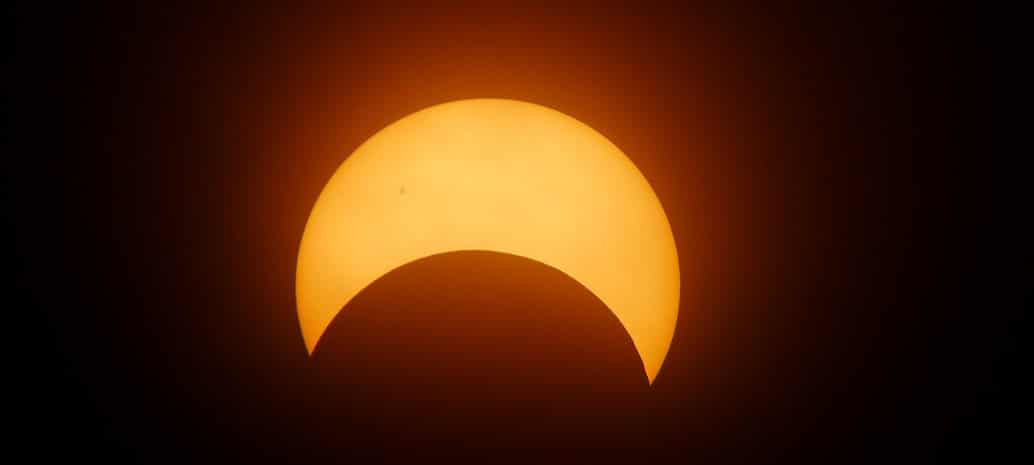pv magazine: Can you briefly describe the fundamental technical challenge that the eclipse poses to electric grids that get a portion of their power from solar?
 Mike O’Boyle: The main technical challenge is not replacing the kilowatt-hours that are missing, but in dealing with rapid loss and then rapid return of solar generation. So the technical challenge is really dealing with the rate in change of output, as opposed to the gross change in output.
Mike O’Boyle: The main technical challenge is not replacing the kilowatt-hours that are missing, but in dealing with rapid loss and then rapid return of solar generation. So the technical challenge is really dealing with the rate in change of output, as opposed to the gross change in output.
California ISO said the decrease production from solar will be 70 MW per minute, and the ramp-up when the moon passes will be 90-100 MW per minute. That compares to an average ramp up rate at the same time, 9 AM to noon, of 29 MW per minute. But it is not as though the California grid doesn’t already change output from lower to higher power on a daily basis, because California is already dealing with really low net load during the middle of the day and a late evening ramp of up to 12 GW. The outage here will only be about 6 GW.
pv magazine: Can you describe how different the impact of the eclipse will be in California versus North Carolina and Georgia?
O’Boyle: I think the magnitude is going to be higher in California. I did look at the impact on NC and it should be about 2,500 MW as opposed to 6,000 in California. Although this is a larger system in California, the net impact on the system will still be higher. The two systems will deal with meeting the missing power mostly the same – flexible hydro generation and gas generation.
I think those systems also have a pretty important tool a their disposal, and that is pre-curtailing solar on their way down and re-introducing solar on the way up. That is a tool of the last resort, because many of the contracts with solar producers require that the off-taker pay the solar producer whether there is curtailment or not. Most of those plants are controllable. In a last-resort case, this will allow for natural gas and hydro, which have ramping limitations themselves, to compensate at a pace that maintains reliability.
One of the big differences in California is that there is a lot of battery storage that will have a big role to play. About 400 MW of battery capacity is available to discharge as the moon passes the sun, and then soak up a lot of the extra energy. This will be very low cost if not negative on the wholesale market in CA, and then will create value for the storage using arbitrage.
pv magazine: When you look at all the resources California has, including gas, energy storage and demand side resources, which of these do you expect to play the biggest role in supporting the system ramp and meeting demand?
O’Boyle: Natural gas and energy storage will be playing about an equal role. There is about 3000 GW of storage capacity, most of which is pumped hydro, so that takes care of about half the ramping needs. And natural gas will take care of most of the rest of it.
Demand side resources don’t provide a ton of the lift in California. There is a push by the Public Utilities Commission and utilities to get consumers to sign up and avoid as much of their impact as they can, but we will see how much that voluntary program shows up. As far as Demand Response in the marketplace those resources are mostly capacity resources, so they are not being used to actively respond to dynamic conditions. They are used when there is a scarcity event, and this is not a scarcity event.
Since the California ISO has plenty of storage and natural gas to deal with the eclipse, I don’t think demand response is going to play a huge role. But you never really know what kind of response you are going to get out of customers. It has to do in part with customer education, but customers aren’t being paid to do this. Without a price signal I don’t think you are going to get that much demand response.
pv magazine: What about the regional Energy Imbalance Market? Will it play a role?
Mike O’Boyle: The Energy Imbalance Market’s (EIM) role is really in its name, in dealing with imbalances. So when a balancing authority has either an excess or a deficit, they can go to this real-time energy market and trade with their neighbors. In the case of the eclipse, especially with east-to-west trading, you can see some sort of mitigating price impacts, when some areas are putting solar back on the system and others are losing it. Grid operators would be wise to take advantage of this.
The volume of trading on the EIM is not really high, so it provides something of a backstop to utilities that are struggling to balance supply and demand. It gives them another low-cost tool to deal with the eclipse.
We’ve talked about in the past how the EIM is more of a precursor to a real-time market in the West. If there was a regional market in the West, the eclipse would be less of an issue. If neighbors could trade in real time with each other, that would be quite an effective way to deal with this eclipse.
It could certainly reduce our reliance on in-state natural gas generation, and allow us to take advantage of low-carbon resources in the rest of the West.
pv magazine: What are the odds that something goes wrong and there is a failure on part of the California grid?
O’Boyle: Without being in the operating room myself, I would have trouble putting a probability on it. But with all the assurances we have received from the California ISO and other utilities, I don’t think we are going to see a failure on the California grid. With all the tools at their disposal and the fact that they have had decades to plan for this event, it would be a shock to me that there was some sort of real failure here.
The grid and all its reserves are really built around major outages that are unpredictable. Particularly the large nuke plants either in the West or in California. For this event we’ve had 100 years to plan. It puts into perspective the difficulty of this event compared to the possibility that a large unit could go off, unexpectedly.
The German grid dealt with this a couple of years ago, and the magnitude was slightly larger – about 7,000 MW loss over a similar time period. They didn’t have any service disruptions, solar already in 2015 was providing something like 14 GW, and it was a partial solar eclipse. Like California, they had plenty of notice, and by marshaling all the resources at their disposal, they had plenty of capacity to deal with a large down ramp and a rapid up-ramp of a slightly larger scale.
In Germany can do it, California should be able to do it.
This content is protected by copyright and may not be reused. If you want to cooperate with us and would like to reuse some of our content, please contact: editors@pv-magazine.com.









By submitting this form you agree to pv magazine using your data for the purposes of publishing your comment.
Your personal data will only be disclosed or otherwise transmitted to third parties for the purposes of spam filtering or if this is necessary for technical maintenance of the website. Any other transfer to third parties will not take place unless this is justified on the basis of applicable data protection regulations or if pv magazine is legally obliged to do so.
You may revoke this consent at any time with effect for the future, in which case your personal data will be deleted immediately. Otherwise, your data will be deleted if pv magazine has processed your request or the purpose of data storage is fulfilled.
Further information on data privacy can be found in our Data Protection Policy.